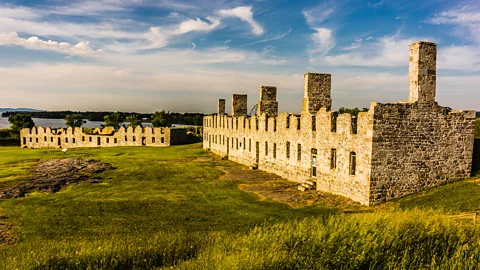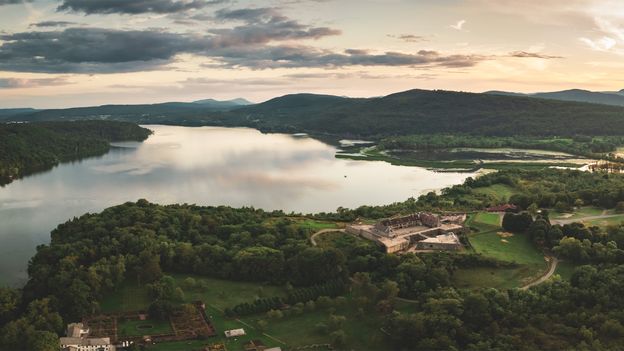Lake Champlain is a vast expanse that extends for roughly 435 square miles, straddling the borders of western Vermont and eastern New York and spilling into the Richelieu and St Lawrence rivers, which stretch north to Montreal and Quebec City in Canada. As Fort Ticonderoga curator Matthew Keagle told me, this made the waterway and its most prominent garrisons – Fort Ticonderoga and Crown Point, located 10 miles south – key locations for the movement of British troops, supplies and intelligence during the colonial period (roughly 1600 through 1776).
Emboldened by the Massachusetts militiamen who defended the towns of Lexington and Concord against British forces and initiated the war a month earlier in April 1775, two of the US’s more colourful Revolutionary War figures turned north-west towards Lake Champlain. Ethan Allen, leader of the scrappy Green Mountain Boys militia, and Benedict Arnold, an ambitious, impetuous merchant whose name would later become synonymous with treachery, reluctantly agreed to share command of a dead-of-night attack on Ticonderoga.
“What was effectively a defensive war against the British… now turns into something very different,” said Keagle, smartly dressed in a royal blue coat and knee-high boots, not unlike those depicted in the famous painting Capture of Fort Ticonderoga, which the historian stood in front of. “It dramatically changes the scope of the conflict.”
The weapons captured at the fort were hauled 300 miles by oxen and ice sledge to Boston, where Patriots used them to batter, and ultimately expel, British troops in March 1776.
 AlamyCrown Point, located nearby Fort Ticonderoga, was also captured by the Americans in May 1775 (Credit: Alamy)
AlamyCrown Point, located nearby Fort Ticonderoga, was also captured by the Americans in May 1775 (Credit: Alamy)
Today, some of those cannons, mortars and Howitzers are among 200,000 objects displayed at Fort Ticonderoga’s museum, which houses the western hemisphere’s largest collection of 18th- and early 19th-Century munitions, and the US’s largest assemblage of 18th-Century military uniforms. Weaponry and cultural artefacts can also be found at the newly expanded museum at Crown Point, which was also captured by the Americans in May 1775.


